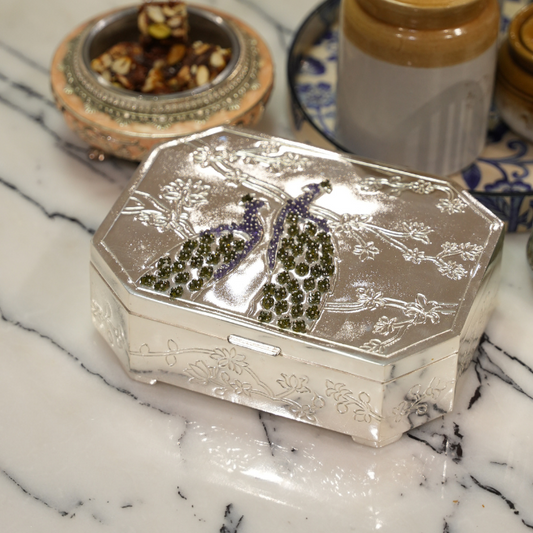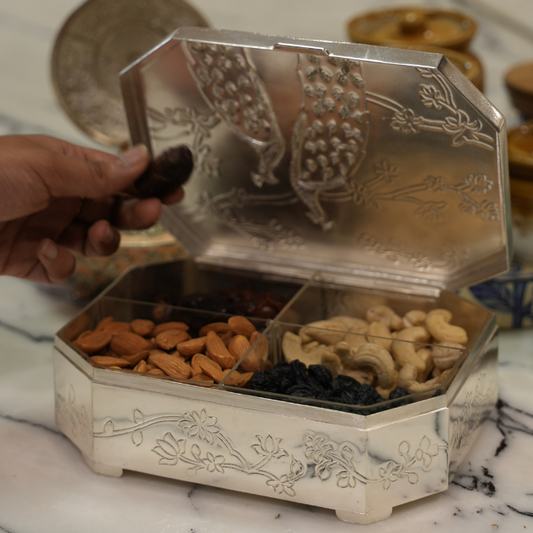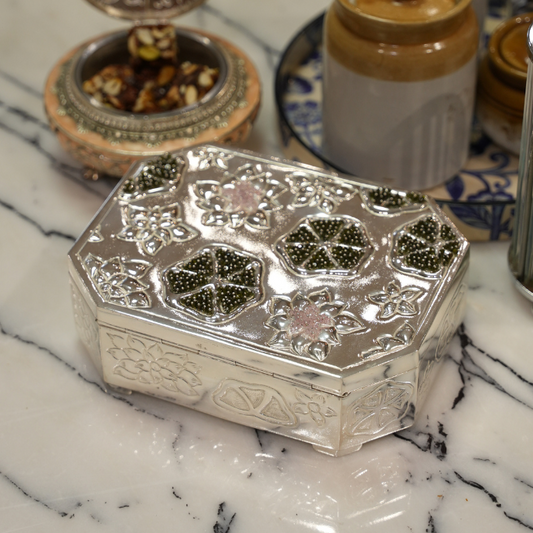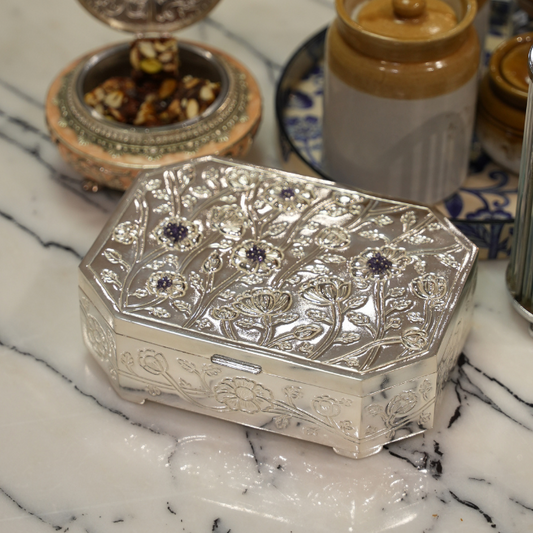Indian silver holds a unique place in the nation’s history, culture, and economy. This versatile metal has been cherished for centuries, symbolizing wealth, tradition, and artistry. As India continues to be one of the largest consumers of silver globally, understanding its rich heritage and evolving significance sheds light on why it remains integral to Indian life today.
Historical Significance of Indian Silver
Early Use in Ancient Civilizations
The story of Indian silver dates back to the Indus Valley Civilization, where silver artifacts such as jewelry and utensils were uncovered, showcasing its early use. The metal was prized for its durability and beauty, making it a preferred material for trade and craftsmanship.
Role in Trade and Commerce
Silver has long been a cornerstone of India’s economy. During the Mughal and British eras, silver coins were the primary medium of trade, facilitating commerce across vast empires. Its intrinsic value made it a reliable and sought-after currency.
Indian Silver in Royal and Imperial Contexts
Throughout history, Indian royalty adorned themselves with silver ornaments and used intricately designed silverware in palaces. Coins, statues, and other decorative items crafted from silver reflected the grandeur and opulence of India’s rulers.
Traditional Uses of Indian Silver
Silver in Jewelry and Adornments
Indian silver jewelry, from anklets to bracelets, is celebrated for its timeless charm and intricate designs. These adornments are not just decorative but also carry cultural and symbolic significance, often passed down through generations.
Silver Utensils and Their Cultural Importance
Silver utensils have been a staple in Indian households, revered for their antibacterial properties and believed to enhance the taste of food. They are often used during special occasions and ceremonies.
Religious Ceremonies and Rituals
In Indian traditions, silver is synonymous with purity and prosperity. It is widely used in religious ceremonies—from silver idols and puja thalis to coins offered at temples and weddings. Silver symbolizes blessings, making it an essential part of rituals.
Symbolism in Mythology
Silver features prominently in Indian mythology, representing the moon and purity. It is often associated with deities, signifying divine blessings and prosperity.
Indian Silver Craftsmanship and Artistry
Techniques and Skills
Indian artisans have mastered the art of silver crafting, employing techniques such as filigree, embossing, and engraving to create intricate designs. These skills have been honed over centuries and passed down through generations.
Famous Silver Artisans
Regions like Jaipur, Cuttack, and Kutch are renowned for their exceptional silver craftsmanship. Artisans from these areas have gained global recognition for their detailed and innovative designs.
Regional Variations
Each region in India boasts a distinct style of silver artistry. For instance, Orissa’s filigree work and Rajasthan’s embossed silver ornaments reflect the diverse traditions and techniques across the country.
Economic Role of Silver in India
A Leading Consumer
India is among the world’s largest consumers of silver, driven by its demand in jewelry, investments, and industrial applications. The metal’s cultural importance ensures its consistent presence in the market.
Industrial Applications
Beyond traditional uses, the uses of silver are vital in modern industries, including electronics, solar energy, and medical devices. Its conductivity and antibacterial properties make it indispensable in these fields.
Silver Investment Trends
Silver remains a popular investment in India, especially during festivals like Akshaya Tritiya. It is considered a hedge against inflation and a safe asset in uncertain times.
Modern Uses and Innovations
Contemporary Jewelry Trends
Modern designs have given silver a fresh appeal, blending traditional motifs with contemporary aesthetics. Silver jewelry is now a fashionable and affordable choice for everyday wear.
Technological Advancements
Innovations in silver use include applications in solar panels, water purification systems, and medical coatings. These advancements highlight its relevance in sustainable and health-focused solutions.
Environmental Sustainability
Efforts to recycle silver and reduce the environmental impact of mining are gaining momentum. India is increasingly adopting sustainable practices in silver production and consumption.
Silver in Indian Culture and Religion
Festivals and Celebrations
Silver plays a pivotal role in Indian festivities, from Diwali to weddings. It is often gifted as coins or decorative items, symbolizing good fortune and prosperity.
Religious Significance
Silver is integral to Indian religious practices, used in idols, ritual accessories, and temple offerings. Its association with purity and blessings enhances its spiritual value.
Health Beliefs
Traditional Ayurvedic practices credit silver utensils with promoting health and immunity. Silver accessories are also believed to balance body heat and ward off negative energies.
Conclusion
Indian silver embodies a rich legacy that intertwines with the nation’s culture, economy, and traditions. Its journey from ancient artifacts to modern innovations reflects its enduring value. As India continues to cherish and innovate with silver, its role in shaping history and technology remains profound. The story of Indian silver is one of heritage, resilience, and adaptability.
FAQs
Q: Why has silver played a significant role in Indian culture throughout history?
A: Silver has been valued for its beauty, durability, and symbolic meanings. Historically, it has been used in trade, coinage, jewelry, and religious artifacts, symbolizing purity and prosperity.
Q: What are some traditional uses of silver in Indian ceremonies?
A: Traditional uses include jewelry, utensils, and religious items such as diyas, idols, and coins, used to attract positive energy and blessings.
Q: How does silver craftsmanship contribute to India’s cultural heritage?
A: India’s silver artisans create intricate designs that reflect diverse regional traditions, preserving the nation’s rich artistic heritage.
Q: What factors influence silver prices in India?
A: Global economic trends, crude oil prices, geopolitical events, and local market conditions impact silver prices.
Q: How is silver used in modern industries and technology?
A: Silver is essential in electronics, solar panels, medical devices, and water purification systems due to its conductive and antibacterial properties.
Q: What are the health benefits of using silver utensils and accessories?
A: Silver utensils are believed to have antibacterial properties, improving immunity and promoting well-being according to Ayurvedic practices.
Q: How has the use of silver evolved in contemporary Indian society?
A: Silver now blends traditional significance with modern trends, making it popular in jewelry, technology, and sustainable practices.







